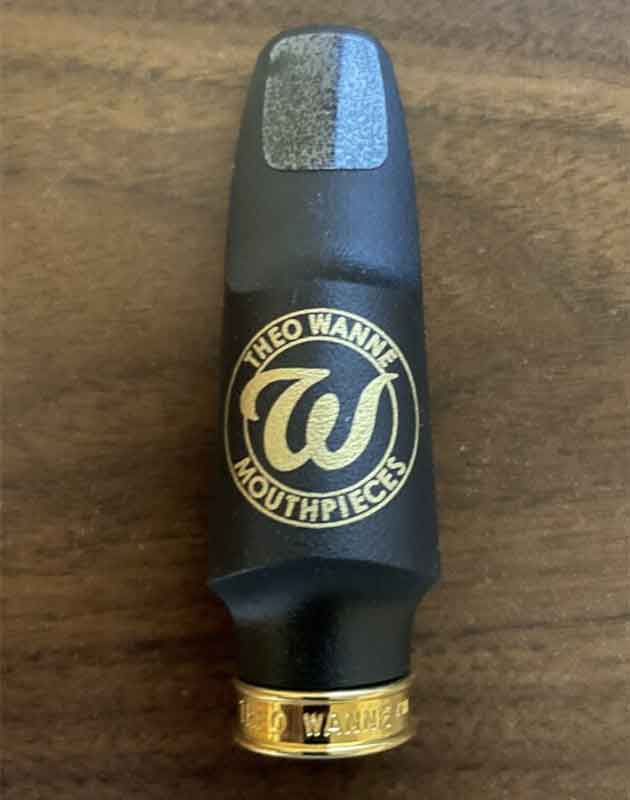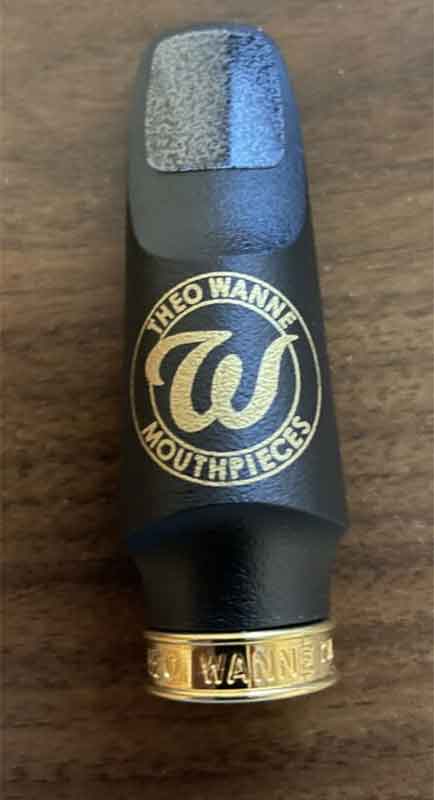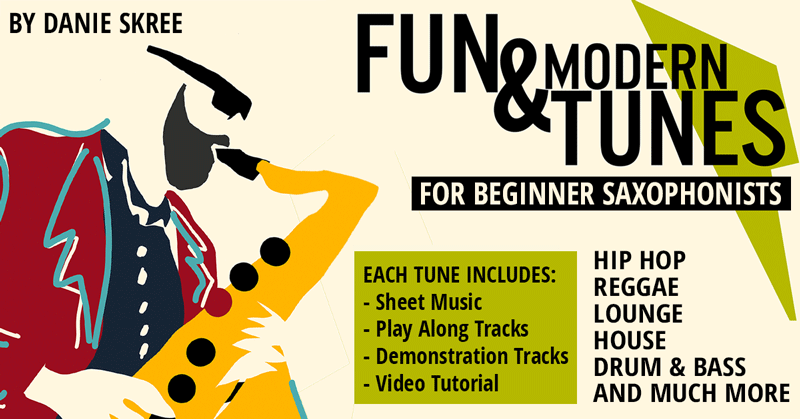Review: Theo Wanne’s Price Conscious “Essentials” Mouthpieces

Introduction
Theo Wanne has expanded its saxophone mouthpiece lineup with the new Essentials series, offering “Concert”, “Contemporary”, and “Jazz” models for soprano, alto, tenor, and baritone saxophones. These affordable mouthpieces aim to provide options for diverse playing styles. Bryan Vance, the company’s COO, sent me an Essentials Jazz Tenor 7* and Essentials Jazz Alto 5 and 7 tip opening. I will be reviewing each mouthpiece across the following five criteria:
- Tone
- Response
- Intonation
- Quality
- Overall performance
Theo Wanne Essentials Jazz Tenor (7*)

Product Overview
The Theo Wanne Essentials jazz model was designed with the classic jazz player in mind. The sound profile for this mouthpiece was meant to be not too dark nor too bright but more in the middle. The jazz model showcases a medium chamber with a roll-over baffle and is made out of proprietary bio-safe polymer, leveraging a new additive manufacturing process. This material is similar to the resonance, density, and weight of vintage hard rubber. Just like the other Theo Wanne mouthpieces, the Essentials line is held to the same high standard as the Signature models to eliminate inconsistencies and the need to try multiple of the same tip opening to find the right one for you. The Essentials jazz tenor mouthpiece is currently offered in two tip openings: 5 (.080) & 7* (.105). To find out more information, check out the links below to learn more:
- Theo Wanne Essentials Overview
- Theo Wanne Essentials Jazz Details
- Theo Wanne New Addictive Manufacturing Process Explained
Tone
Now, I find the tone of a mouthpiece can be quite subjective in terms of what you think is bright versus dark. Overall, I found the Essentials Jazz to be balanced sonically from low Bb to high F#, but I did find that when playing above high G and into the palm keys, I noticed my sound was a bit on the brighter side. I found the sound of this mouthpiece to have a nice spread and core across all registers; depending on how you focused your air.
Sonically, I think this mouthpiece is not a copy of a vintage slant or early Babbitt Link but takes aspects from those mouthpieces in terms of edge, core, timbres, etc., and combines them with Theo’s mouthpiece concepts to try and provide players the characteristics associated with the classic jazz sound but with additional flexibility.
Response
The Essentials Jazz was easy to sub-tone and play at various dynamic levels with ease from top to bottom. Based on the design, I did not notice any “tubbiness”, and it was quite free blowing versus having more resistance, which can be good or not depending on preference. This proprietary polymer material did feel comfortable playing on, but for me, it had a bit different buzz to it than vintage or traditional hard rubber. With that being said, the material felt fine, and it did not take long to get used to the difference. Projection-wise, I found the Essentials Jazz could project well when pushed, but if you are looking for something that really cuts through, then you may prefer the Contemporary model.
Intonation
From playing my overtone series and even into the altissimo range, I found the Essentials Jazz model performed well in terms of intonation. I did not have to adjust much when switching between my Slant and the Essentials Jazz mouthpiece to play in tune.
Quality
To my surprise, these pieces are not CNC machined but are made using additive manufacturing which are then hand-faced by the same techs that face the Signature Collection. This process ensures that each and every facing on them is perfect. After further speaking with Bryan, he mentioned that “unfortunately many brands at this price point will leave the player with the frustration of a warped or concave table, uneven side rails, thick/thin or non-existent tip rails and incorrect facing curves. For beginner or intermediate players not knowing these discrepancies, it can be a disaster. So, we decided to treat the Essentials just like our top-end models and not compromise at all.”
Overall
I am overall impressed with the Theo Wanne Essentials Jazz model. I think the essentials line-up truly gives advancing students, hobbyists, and professionals access to a quality mouthpiece that is consistent, easy to play, and replaceable if anything happened especially at its price point. The Essentials Jazz model is $195 which put’s in relatively within the range of the Vandoren V16, Otto Link Hard Rubber, Jody Jazz, D’Addario Select Jazz, and a few others just to name a few.
Although mouthpiece preference is obviously extremely subjective, I personally favor my Slant Link over the Essentials Jazz mouthpiece. However, I still found it easy to switch between my main mouthpiece and the Essentials Jazz model.
I do intend to revisit this mouthpiece, as it embodies certain characteristics and playability that I found easier to achieve than on my Link.
For a further comparison, please see the sound clips below.
Comparison Sound Clips
Testing Equipment
- Saxophone: Lupifaro Platinum Tenor
- Reed: D’Addario Jazz Select 2.5
- Ligature: Marc Jean Evolution 4 Ligature
Original Slant Signature (7)
Theo Wanne Essentials Jazz (7*)
Theo Wanne Essentials Jazz Alto 5 (.071) & 7 (.081)

Product Overview
Same as Essentials Jazz tenor model. See links below for
Tone
Overall, I noticed that the Essentials Jazz alto mouthpiece, compared to my current setup (Phil-Tone Meyer Copy), played more on the brighter side, offering greater clarity and less edge to the sound. The timbre felt balanced from low Bb to high F#, but similar to the Jazz Essentials tenor mouthpiece, I observed that when playing above high G and into the palm keys, the sound leaned toward the brighter side. The Essentials Jazz alto mouthpiece produced a nice spread sound and when you pushed more air through it, it could cut through and project well. The overall sonic characteristics do not directly replicate vintage models like Meyer, Brilhart, or Otto Link, but rather, seem to blend elements from modern mouthpieces such as the Meyer, Vandoren V16, and D’Addario Select Jazz, creating its own distinct sound profile.
Response
The Essentials Jazz alto mouthpiece was easy to sub-tone and play across various dynamic levels from top to bottom. Based on the design and my experience with other mouthpieces in Theo’s lineup, I found the Essentials Jazz alto to be quite free-blowing, as opposed to having more resistance; this can be a matter of personal preference. Similar to the tenor, the Essentials Jazz alto uses the same proprietary polymer material, which felt comfortable to play on, though I noticed it had a slightly different buzz compared to vintage or traditional hard rubber. That said, the material felt fine, and I quickly adjusted to the difference. In terms of projection, I found the Essentials Jazz alto mouthpiece could project effectively when pushed. However, if you’re seeking something that really cuts through and leans even brighter, you may prefer the Contemporary model.
Intonation
While playing my overtone series and even venturing into the altissimo range, I found that the Essentials Jazz alto model fared well in terms of intonation, although it took me a little time to adjust in the upper stack.
Overall
I am overall impressed with the Theo Wanne Essentials Jazz alto model. Similar to the Essentials Jazz tenor, I believe the alto is aimed at advancing students, hobbyists, or professionals seeking a quality mouthpiece that is consistent, easy to play, and replaceable, especially at its price point, which puts it at a significant advantage compared to other high-quality pieces.
The Essentials Jazz alto model is priced at $175, placing it within the range of the Vandoren V16, Otto Link Hard Rubber, Jody Jazz, D’Addario Select Jazz, and several others.
While I personally may not be ready to switch away from my Phil Tone Meyer Copy, I found it easy to go between my Phil Tone and the Essentials Jazz alto model. I tried both the Essentials Jazz 5 and 7 tip openings, and I actually preferred the 5 tip opening as I found it easier to play and control. That said, I understand that for some players, the 5 tip opening may feel too small, so the 7 tip opening could be your best bet. Please see the sound clip below for a further comparison.
Comparison Sound Clips
Testing Equipment
- Saxophone: Lupifaro Platinum Alto
- Reed: Lupifaro Jazz 2.5
- Ligature: Rovner Eddie Daniels Edition
Phil Tone Meyer (6)
Theo Wanne Essentials Jazz alto (5)
Final Thoughts
I would like to thank Bryan for sending me the Essentials Jazz tenor and alto mouthpieces to review. Seeing the overall costs of gear increasing over time due to a wide variety of reasons, it’s nice to see Theo offering this Essentials lineup for players looking to try a step up from their current setup.
With the Essentials line, the Theo Wanne team has successfully created a more accessible entry point into their brand. As I have played more of Theo’s signature models (which in some cases I prefer to the Essentials pieces), it becomes apparent that these signature models are not necessarily targeted towards the entry level player looking to make a step up, but more for the advancing player, professional musician, or serious hobbyist.
If you are in the market to upgrade your current setup and have been looking at a V16, D’Addario Jazz Select, modern Meyer, Otto Link, Jody Jazz HR, etc., then I suggest you add the Theo Wanne Essentials Jazz to your list as a potential option, as it may be the step up you have been looking for.






Roundup of 2025's Hottest Sax Gear So Far » Best. Saxophone. Website. Ever.
May 21, 2025 @ 5:19 pm
[…] Theo Wanne Essential Mouthpieces […]